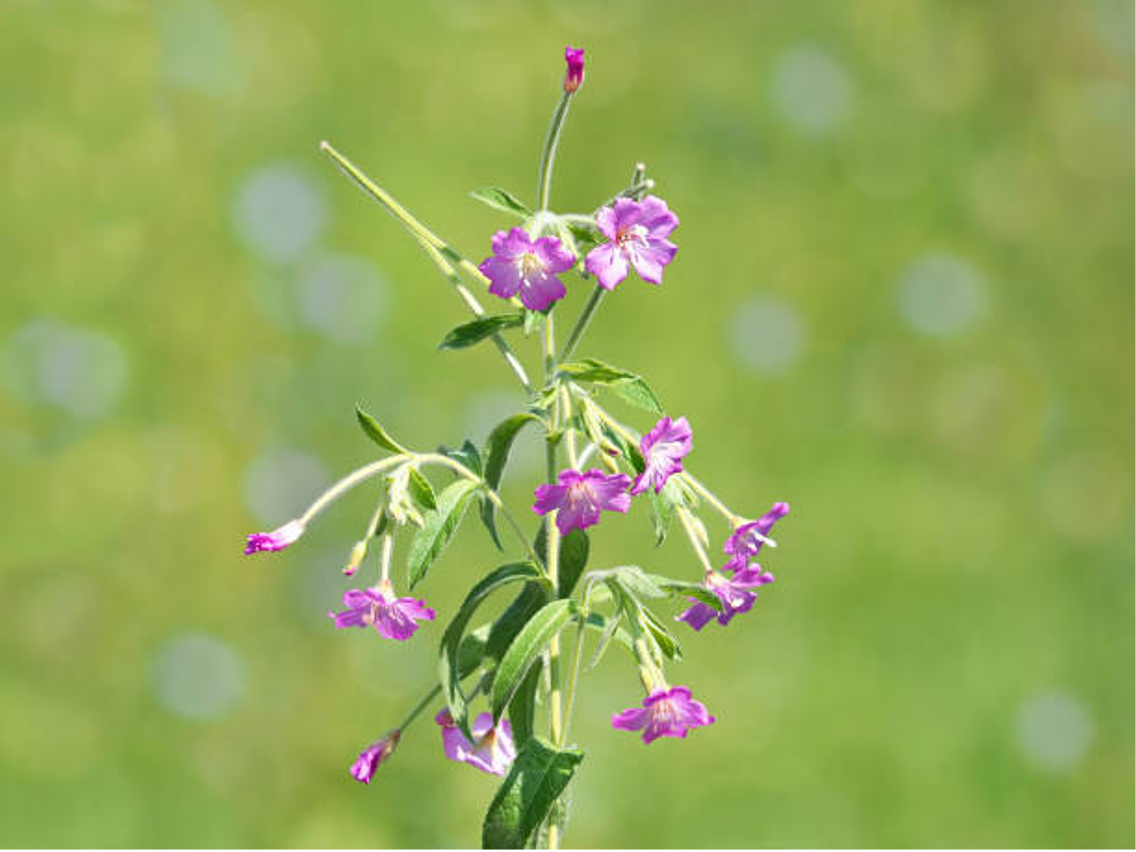Smallflower Willowherb - Epilobium parviflorum

Common Names: Smallflower Willowherb, Small-flowered Willowherb, Hairy Willowherb, Epilobium parviflorum, Smallflower, Willowherb, Ivan Chai, Ivan's Tea, Purple Willowherb, Fireweed, Chamerion angustifolium, Oenothera parviflora, Women's Herb, Chameirion, European Willowherb, global, latin
Latin Name: Epilobium parviflorum
Origin: Africa, Asia, Europe, South America, North America
Short Introduction
Growing Smallflower Willowherb from seed at home is rarely demanding. Direct sowing or transplanting is usually done in May. Optimal growth requires a moist location with heavy, loamy soil. Leaves should be harvested before or during flowering, typically between June and September. Seeds can be easily started indoors. When harvesting, focus on the upper part of the stem to allow the plant to continue growing, thriving, and producing seeds. If the plant is harvested midway (as the entire above-ground part—stem, leaves, or flowers—can be collected), it will develop lateral shoots. Harvest should be as gentle as possible, as Smallflower Willowherb can regrow multiple times if the root system remains intact and may sprout anew the following year. Take care not to confuse Smallflower Willowherb with Great Willowherb, which does not contain the same desired compounds.
Detailed Description
This herb is particularly valued for its effects on the urinary tract and the prostate.
Botanical Information
Smallflower Willowherb is a perennial herb that typically reaches about 1 meter in height (though commonly stands between 30–80 cm tall). Its upright stem is densely covered with fine hairs, especially on the lower parts. The leaves are opposite, sessile, lanceolate, and lightly toothed, with a rounded base and are 5–10 centimeters long. The flowers are small—reddish, pale pink, or almost white—measuring 6–8 mm across, each with four petals, eight stamens, and a four-lobed stigma. Blooming occurs from June to August. The hermaphroditic flowers are either self-pollinated or pollinated by insects. The fruit is a slender capsule, about 8 cm long, containing tiny black seeds (about 1 mm) covered in delicate white hairs that allow them to travel on the wind.
Origin and Distribution
Smallflower Willowherb is found throughout Europe (including the UK), and from central Sweden down to northern Africa, extending to western Asia, India, and North America up to northern Canada and Alaska. It is commonly found in mountainous regions up to an elevation of 1,400 meters, and in some cases up to 2,500 meters. It grows along forest roads, beside streams, and among fruit trees, sometimes as a weed. Smallflower Willowherb prefers shaded or semi-shaded locations with ample moisture, favoring bogs, meadows, damp forest clearings, roadside verges, and woodland edges. It thrives in stony, nitrogen-rich soils. Throughout the Czech Republic, it is common almost everywhere, with the highest frequency in foothill regions.
Usage / Dosage
In traditional herbal medicine, Smallflower Willowherb has an irreplaceable role. Its benefits can be enjoyed alone or in combination with other herbal remedies with similar therapeutic effects. The active components of Smallflower Willowherb support prostate health—an effect confirmed by laboratory studies using concentrated and purified extracts on prostate tissue. Folk medicine continues to recommend Smallflower Willowherb for issues such as painful urination, frequent urge to urinate, mild incontinence, and alleviating more severe urinary incontinence. Herbalists also turn to this plant for kidney ailments, bladder inflammation, and various prostate conditions, particularly its protective effect in benign prostatic hyperplasia (enlarged prostate). For urinary tract inflammations, it is frequently combined with other herbs such as bearberry (note: in the Czech Republic, wild harvesting is prohibited as it’s a protected species), cranberry, goldenrod, knotgrass, psyllium, horsetail, or birch. These blends also help restore urinary tract lining flexibility and counteract edema.
Concentrated extracts of Smallflower Willowherb display anti-inflammatory effects against certain strains of bacteria, suggesting a soothing effect during urinary tract infections. The active components are also known for their antioxidant properties. Folk healing traditions recommend this herb for blood purification, as a companion to dietary regimens, or during general cleanses (traditionally in spring). Proper doses of its compounds are said to help ease menopausal symptoms in women, such as mood swings or sudden feelings of heat/cold.
Externally, decoctions made from Smallflower Willowherb are used to promote healing of both moist and dry shallow wounds, as the herb is believed to accelerate the healing process. Folk medicine also suggests its use for alleviating digestive troubles, rectal bleeding, menstrual discomforts, mucosal damage in the mouth, and reducing inflammatory exudates.
Active Compounds
Smallflower Willowherb contains a diverse range of active constituents, notably flavonoids such as kaempferol, quercetin, and myricetin, along with lectins and sitosterols. These exhibit mild anti-inflammatory, anti-edematous, and partially healing effects on blood vessels and mucous membranes.
Traditional Dosage
Modern herbalists recommend infusing about 1 heaping teaspoon (approximately 5 g) of dried aerial parts with 250 ml of boiling water, letting it steep and drinking immediately. Older sources differ somewhat; chronicling traditions suggest, for acute cases, drinking 1 cup of cold infusion twice daily—by steeping a pinch of the herb in two cups of hot water for 10 minutes. Another traditional method is to simmer 5–10 g of dried herb in 200 ml of cold water over low heat for about 15 minutes (roots may require longer), then strain and serve. All sources agree that the tea should be consumed regularly for a prolonged period (maximum twice daily), always best on an empty stomach.


